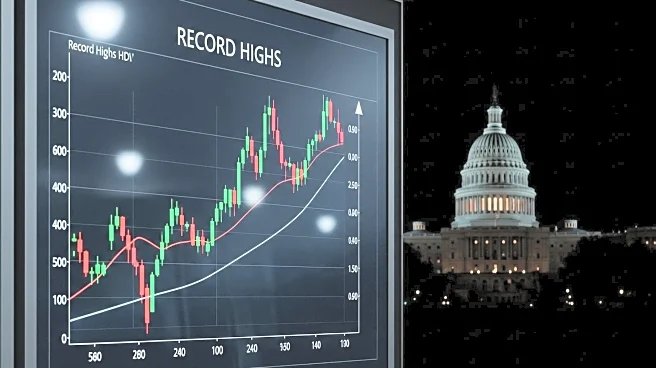What is the story about?
What's Happening?
The Australian Securities Exchange (ASX) has experienced a downturn, trading down by a tenth-of-one-percent to 8,989.10, as the market reacts to the ongoing U.S. government shutdown. This marks the fifth day of the shutdown, with over 800,000 federal employees furloughed due to a deadlock among lawmakers over budget bills. Despite the overall market decline, materials stocks have shown strength, with Lynas Rare Earths and Catalyst Metals seeing significant gains. Concurrently, gold prices have risen to US$3,904 per ounce, driven by safe-haven buying amid fiscal uncertainty in Washington. The Australian dollar is trading at US$0.66, while other commodities like copper and iron ore have seen price moderation.
Why It's Important?
The U.S. government shutdown has significant implications for global markets, including the ASX. The furlough of federal employees and the budget impasse contribute to economic uncertainty, prompting investors to seek safe-haven assets like gold. The rise in gold prices reflects broader market concerns about fiscal stability and potential delays in U.S. economic data releases, such as jobs reports. This situation underscores the interconnectedness of global markets, where political developments in one country can have ripple effects on international financial systems. Investors and businesses are closely monitoring the situation, as prolonged uncertainty could impact economic growth and market stability.
What's Next?
As the U.S. government shutdown continues, markets remain cautious about potential delays in economic data releases, which could further influence investor sentiment. Stakeholders are watching for any signs of resolution in Washington, as a prolonged shutdown could exacerbate economic concerns. The situation may prompt further safe-haven buying, potentially driving gold prices higher. Additionally, businesses and investors are likely to adjust their strategies in response to ongoing fiscal uncertainty, with potential implications for global trade and investment flows.
AI Generated Content
Do you find this article useful?














